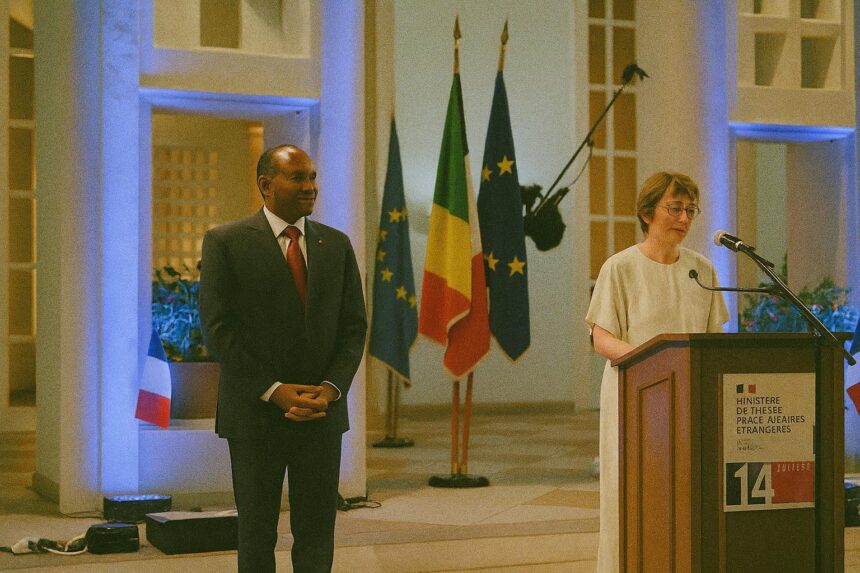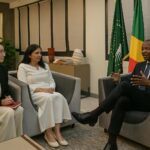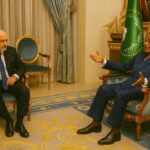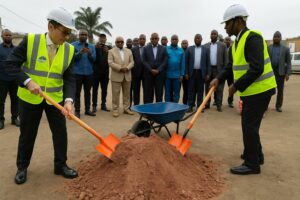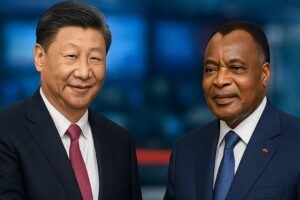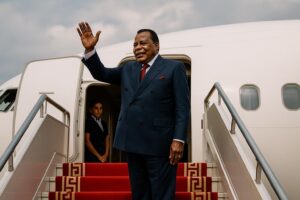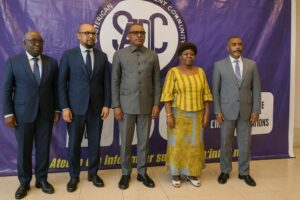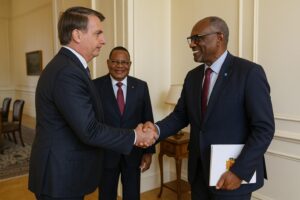Bastille Day Reverberations at La Case de Gaulle
The shimmering banks of the Congo River offered a suitably theatrical backdrop on 14 July as Ambassador Claire Bodonyi hosted the National Day reception within the storied walls of La Case de Gaulle. The venue, where General de Gaulle outlined Free France’s African designs in 1944, has long functioned as an architectural shorthand for the historic intimacy between Brazzaville and Paris. Toasting dignitaries that included Foreign Minister Jean-Claude Gakosso, Bodonyi spoke of a bilateral “rumba”—a dance equal parts cadence and improvisation—whose rhythm still animates the political corridors of both republics. Her metaphor was more than poetic licence; it hinted at the intricate choreography required to keep a mature yet demanding partnership aligned in an era of multiplying external suitors for Central Africa.
- Bastille Day Reverberations at La Case de Gaulle
- High-Level Visits Reinforce Presidential Chemistry
- Memory Politics and the Cultural Vector
- Climate Convergence in the Congo Basin
- From Corniche to Cabotage: Infrastructure as Statecraft
- Navigating a Multipolar Diplomatic Stage
- Prospects for a Resilient Partnership
High-Level Visits Reinforce Presidential Chemistry
Less than six weeks before the soirée, President Denis Sassou Nguesso had walked up the red carpet of the Élysée Palace, reciprocating President Emmanuel Macron’s earlier invitation (Le Monde, 2023). The Paris meeting, conducted under the chandeliers of the Salon Murat, reaffirmed the personal rapport forged during multiple summits on the Congo Basin. In return, the French cabinet dispatched Minister Delegate for Francophonie Thani Mohamed Soilihi to Brazzaville, a gesture calculated to underline Paris’s continuing cultural soft power. Observers in both capitals note that such reciprocal diplomacy addresses two objectives: it gives the Congolese leadership a platform commensurate with its regional forest-guardian role, and it offers France a stabilising anchor in an increasingly competitive Gulf of Guinea neighbourhood.
Memory Politics and the Cultural Vector
Ambassador Bodonyi’s insistence on ‘working on our shared history, tirelessly’ echoed recent academic debates about the politics of memory in Francophone Africa (Sciences Po, 2022). Paris has often been criticised for episodic introspection, yet tangible initiatives now pepper the bilateral agenda. The refurbishment of the Centre for Research and Audiovisual Training on Diversity aims to transform a colonial-era compound into an open-access laboratory of Congolese creativity. French operators also support a digitisation project for the archives of the 1960 Conference of African States, a seminal moment preceding Congo’s independence. By investing in heritage, both sides hope to insulate contemporary cooperation from accusations of neo-imperial nostalgia, allowing cultural diplomacy to function as a unifying rather than divisive variable.
Climate Convergence in the Congo Basin
Scientific assessments place the Cuvette Centrale’s peatlands among the world’s largest carbon sinks, storing an estimated thirty gigatonnes of CO₂ (Nature, 2017). In her address, Bodonyi reminded guests that Brazzaville should not ‘stand alone before this task,’ announcing a French contribution of twenty million euros to the Congo’s Country Package under the Just Energy Transition framework. Paris also endorsed Sassou Nguesso’s proposal for an International Blue Fund aimed at financing conservation across the Basin’s waterways. Beyond symbolism, joint field missions between the French Office for Biodiversity and the Congolese Ministry of Forest Economy have already mapped hotspots of illegal logging where a forthcoming Academy for Biodiversity Security will train regional eco-rangers. Such initiatives dovetail with France’s Indo-Pacific biodiversity pledge, while affording Congo an amplified voice in multilateral climate negotiations.
From Corniche to Cabotage: Infrastructure as Statecraft
Few instruments convey political will more visibly than infrastructure. The Brazzaville riverfront corniche—financed under the Debt-Reduction and Development Contract—now hosts public promenades and a nascent creative quarter. French agencies, notably the AFD, are finalising prefeasibility studies on electrification corridors that would tie semi-urban clusters along the RN2 highway to hydro output from the Liouesso dam. Discussions have equally progressed on modernising fluvial port facilities to ease cabotage between the capital and Ouesso, an area central to timber exports. By blending concessional loans with partial debt swaps, both governments seek to demonstrate that sustainable debt management can coexist with strategic capital expenditure, an equation closely watched by regional credit-rating agencies.
Navigating a Multipolar Diplomatic Stage
France’s recalibrated African policy—outlined by President Macron in Ouagadougou and reiterated in Libreville—embraces partnerships ‘built on humility and mutual responsibility.’ For Brazzaville, that lexicon resonates insofar as it respects Congolese sovereignty while acknowledging the country’s diversification of external ties, notably with Beijing, Ankara and Dubai. Officials at the Ministry of Foreign Affairs stress that the Franco-Congolese axis remains a ‘pivot’ rather than an exclusive lane, with each side adapting to a marketplace of strategic options (Les Dépêches de Brazzaville, 2024). In that sense, the rumba metaphor acquires predictive value: the dancers can change tempo or incorporate new steps, yet they remain bound by a shared musical score—history, language and intersecting interests.
Prospects for a Resilient Partnership
As the Bastille Day fireworks faded over the Congo River, diplomats lingered on the terrace, parsing the ambassador’s final words: ‘Let us not fear the breath of our historic relationship.’ The phrase captured both the vulnerability and the promise of a partnership that has weathered ideological shifts, commodity cycles and geopolitical realignments. Looking ahead, progress will likely hinge on aligning project implementation with local expectations, ensuring that rumba diplomacy delivers tangible dividends for Congolese communities while preserving France’s relevance. If the next steps retain the present cadence—firm yet adaptive—Paris and Brazzaville may well demonstrate that an old dance can still captivate a twenty-first-century audience.

